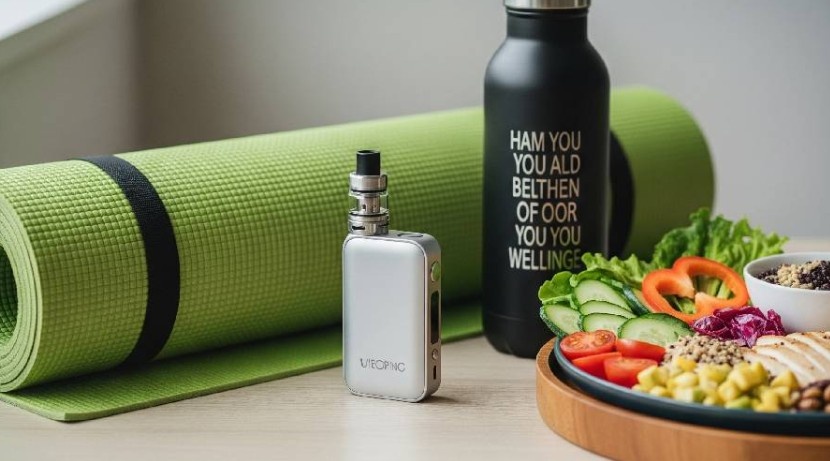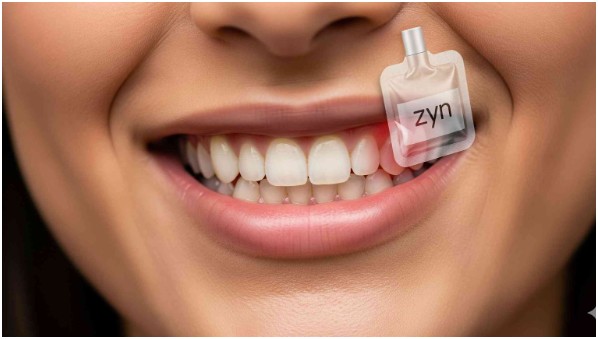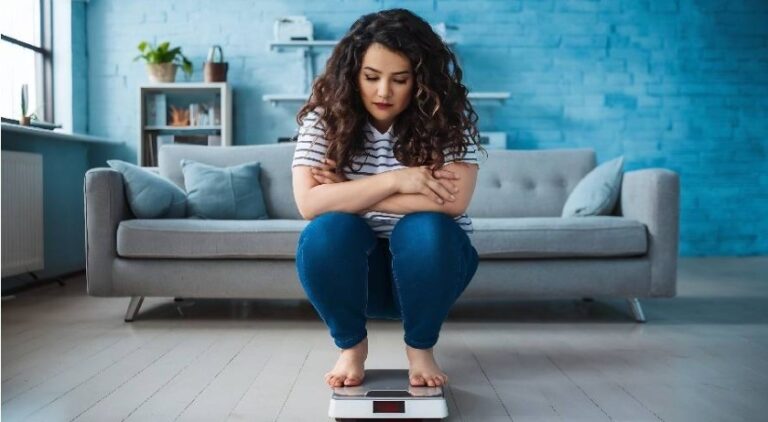I’ll be honest—I never thought about calories and vaping in the same breath. That is, until a random conversation with a friend at a café made me stop and think: Do vapes have calories?
I mean, we all know about the calories in food, drinks, and even in those indulgent lattes we sip on the regular. But vaping? That’s a whole other ballgame, right? It’s supposed to be about flavor, clouds, and relaxation—definitely not about adding to my daily caloric intake. Or is it?
Curiosity piqued, I decided to investigate. Because, let’s face it—while vaping is becoming more mainstream, the idea of it contributing to your calorie count feels a little strange, doesn’t it? So, can vaping really impact your caloric intake? And if so, how?
Let’s break it down.
What Makes Up a Vape? Can It Have Calories?
First, let’s address the basics. A typical vape consists of a few key components: the battery, the heating element, and the e-liquid (or vape juice). The e-liquid is where things get interesting. It’s made of a combination of nicotine, flavorings, and a base liquid, usually made of propylene glycol (PG) and vegetable glycerin (VG).
Now, when you think of calories, you’re usually thinking of food or drink—something that provides energy for your body. The idea behind calories is that they come from things your body can metabolize, like sugars, fats, and proteins. So, do any of these components of a vape juice contain actual calories?
Does the Base of the Vape Juice—PG and VG—Contain Calories?
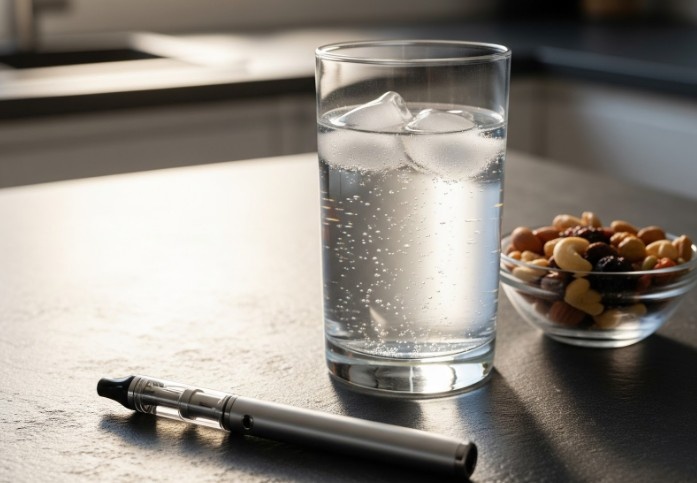
Yes, it does. Both propylene glycol (PG) and vegetable glycerin (VG) are substances that provide a very small amount of calories. These are the base liquids used to suspend nicotine and flavoring in most e-liquids. While the calories from PG and VG are minimal, they do contribute to the overall calorie content.
Here’s the breakdown:
- PG (Propylene Glycol): This liquid is used as a thinner to ensure smooth vapor production, and it has a low calorie count—about 4 calories per gram. However, given the small amount used in each puff, this hardly makes a dent in your overall caloric intake.
- VG (Vegetable Glycerin): VG is thicker than PG and is often used in higher quantities in sweeter e-liquids. It contains about 4 calories per gram as well, but like PG, the amount you’re inhaling is so minimal that the calories barely register.
To put it in perspective, the total number of calories in a full tank of e-liquid (let’s say 3-5 milliliters) is usually less than 10 calories. So, technically, yes, vaping does introduce a tiny amount of calories, but it’s not like sipping on a sugary soda.
Do Vapes Have Calories Because of Flavoring?
Here’s where things can get a bit trickier. Vape flavorings—whether they’re fruity, candy-like, or dessert-flavored—are usually made from a mix of food-grade ingredients. Some of these flavorings do contain a small number of calories, but the quantity is so minute that it’s unlikely to add up to anything significant.
For example, a typical vape juice might contain 5-10% flavoring, which doesn’t add enough calories to make a difference in your daily intake. Flavoring is generally used in such small quantities that even sweet and decadent flavors (think: cotton candy or chocolate) don’t contribute meaningful calories when vaped.
However, if you’re curious about whether a specific flavoring might contribute more calories, the answer is that it would depend on the specific product. Some sweeteners used in vape juice can have a slightly higher calorie count, but again, it’s not enough to affect your waistline or diet in any noticeable way.
What About Nicotine? Does It Add Calories?
Here’s the part where things get a little interesting: Nicotine itself doesn’t have any calories. However, it does have a physiological effect on your metabolism. Nicotine can slightly increase your heart rate and may cause a minor increase in calorie burn—though it’s not enough to have a significant impact on your overall energy expenditure.
In fact, some studies suggest that nicotine may actually reduce appetite in some individuals. This is one reason why many smokers and vapers notice a decrease in hunger when they first start vaping or smoking. But, again, this effect is quite small and would likely not lead to noticeable weight loss or changes in caloric intake.

How to Make the Most of Your Vape Without Worrying About Calories
If you’re wondering whether vaping can fit into a healthy, balanced lifestyle without making you gain weight or mess with your metabolism, the good news is that the calorie content of a vape is so low that it’s virtually negligible. However, here are a few tips to enjoy vaping while still staying mindful of your health:
1. Stay Hydrated
Vaping can cause dehydration, which can sometimes give you a feeling of fatigue or sluggishness. Drink plenty of water to keep yourself hydrated, and consider balancing your vape sessions with other healthy habits.
2. Choose Nicotine-Free or Low-Nicotine Options
If you’re vaping for the flavors and not the nicotine, try nicotine-free e-liquids. These still offer the taste you love without the stimulant effects that nicotine provides. Plus, nicotine-free options will help you avoid any possible cravings or metabolic changes caused by nicotine.
3. Moderation Is Key
Like anything, moderation is important. While vaping itself may not add much to your daily caloric intake, overindulging can lead to a reliance on the habit, which can cause unintended health issues. Enjoy vaping in moderation, just as you would with any other enjoyable habit.
4. Read Labels Carefully
If you’re really concerned about the ingredients in your vape juice, take a moment to read the label. Many manufacturers are now including more detailed information about the ingredients, including the base liquids and flavorings. This can help you better understand what’s in your vape and whether any additional ingredients may have a higher caloric count.
Also Read: can i vape after wisdom teeth removal
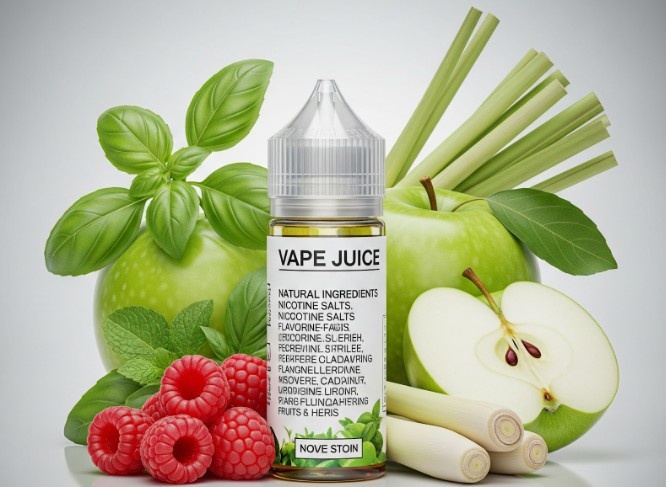
FAQ: Your Vape and Calorie Questions Answered
1. Does vaping make you gain weight?
Vaping itself doesn’t cause weight gain, but nicotine can slightly suppress appetite. If you find that you’re vaping and noticing changes in your appetite or weight, it’s more likely due to other lifestyle factors, such as diet and exercise.
2. How many calories are in a vape pen?
The calories in a vape pen are minimal, likely less than 10 calories per tank of e-liquid. This is primarily from the base liquids (propylene glycol and vegetable glycerin), which have a very small caloric content. It’s not enough to affect your weight in any meaningful way.
3. Are there calorie-free vape options?
Yes, you can find nicotine-free vape options, and many e-liquids contain very minimal amounts of flavoring or additives. These are the best choices if you’re concerned about any caloric content, though keep in mind the calories are still negligible.
4. Can vaping affect my metabolism?
Nicotine can slightly increase metabolism by raising your heart rate, but the effect is minimal. It’s not something that will dramatically change your caloric burn, but it can have an appetite-suppressing effect for some individuals.
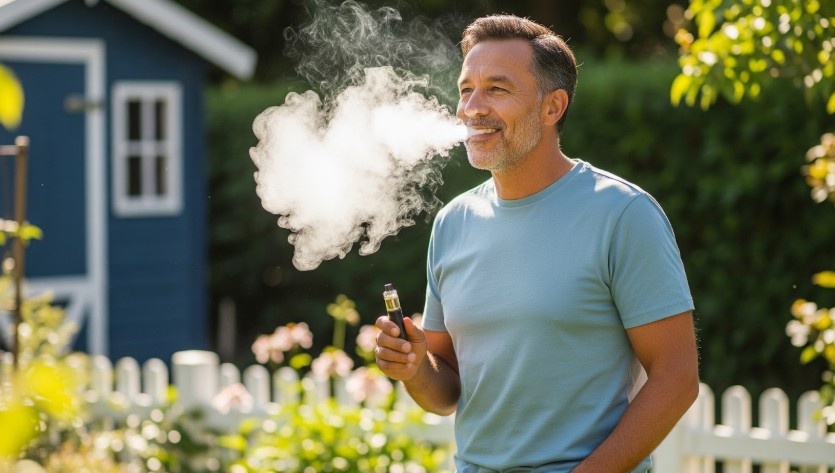
The Final Puff: Vape Mindfully, Enjoy Responsibly
So, do vapes have calories? Technically, yes—there’s a small amount, primarily from the base liquids and flavorings. However, it’s negligible, and certainly not something to worry about if you’re vaping responsibly.
At the end of the day, vaping isn’t something that will cause significant changes to your diet or weight. If you’re mindful about the ingredients, enjoy it in moderation, and pair it with healthy habits, you can vape without adding extra calories to your life. It’s all about balance.



